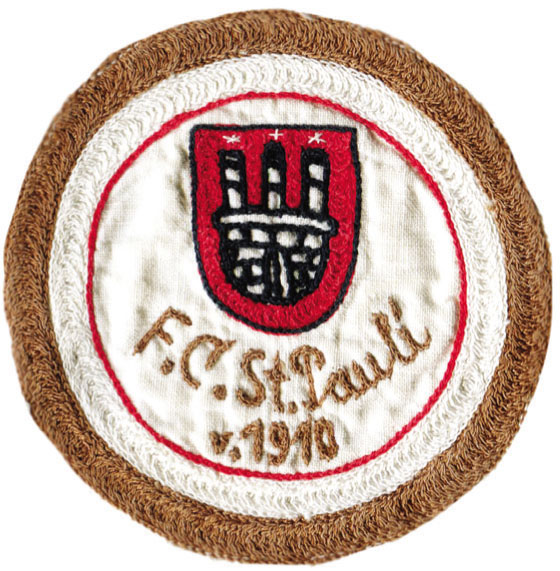
FC ST. PAULI
AMID CASTLES, SKULLS AND WHOREHOUSES
At one end of the Reeperbahn, Hamburg’s red light district, and among the punks, prostitutes and bohemians, you will find FC St. Pauli, the German middle finger raised at the whole football establishment. Although the club lacks any titles, they have a massive fanbase stretching far beyond the country’s borders. This is where, at the Millerntor-Stadion, the pirate flag the Jolly Roger sways next to the rainbow flag, an important symbol for the LGBT movement. Odd and different, they have been exiled and spat on. Transvestite, extremist or drug addict? It doesn’t matter who or what you are, you are always welcome at FC St. Pauli. That is the message from St. Pauli, and it’s one that is in tune with the area from which the club emerged.
That great trading metropolis Hamburg has a long history of economic prosperity. There, in the 17th century, poorhouses and hospitals were huddled together in an area called Hamburger Berg, a place for society’s outcasts which would later be called St. Pauli. This came to be a haunt for dockers, ropemakers and sailors who came looking for a variety of pleasures, and it was here that the football club St. Pauli was founded on 15 May, 1910.
For a long time St. Pauli was a club like so many others, but in the early ’80s they achieved cult status. At the time people would congregate around Reeperbahn and FC St. Pauli as a reaction against the fascist, extreme right-wing fans of HSV (Hamburger Sport Verein). Awareness of the club’s anti-fascism and social activism spread, and in the space of only a couple of years the stands that had previously held perhaps a thousand fans were now packed. In footballing terms, St. Pauli are finding it incredibly difficult to establish themselves in the Bundesliga, but that leads to the obvious question: Is success really what they’re all about?
CLUB: FC St. Pauli von 1910
NICKNAME: Freibeuter der Liga (the League’s Freebooters)
FOUNDED: 1910
STADIUM: Millerntor-Stadion, Hamburg (29,546 capacity)
HISTORIC PLAYERS: Peter Osterhoff, Franz Gerber, Klaus Thomforde, Thomas Meggle and Gerald Asamoah

The sports club Hamburg St. Pauli Turnverein was founded in 1862, and the football section was formed in 1910. The club was named after the area, and the emblem portrayed the castle Hammaburg, borrowed from the city crest.

1924–1947. The football section broke out in 1924 and formed FC. St. Pauli, which was reflected in the respective club logos. FC was spelled out in the emblem of the football team while the original read TV.

1947–1998. Soon after the end of the Second World War, St. Pauli became Hamburg champions and so the club crest was updated. The castle looked the way it did in the original emblem, with the club’s name and the year of its founding spelled out in a circle around it. This emblem existed in a number of variations throughout the second half of the ’90s.

1998–present. Two years before the new millennium, the logo was updated. A darker shade of brown and a lighter red were used. The emblem remains current and has been seen alongside the motto ‘non established since 1910’.

The skull and crossbones, the Jolly Roger, has been seen at Millerntor since the ’80s, when the club’s supporters adopted it as a protest against the establishment. Since then the Jolly Roger has been an unofficial symbol for St. Pauli, and in the 2000/01 season it even appeared on the match shirts.

Castles to skull-and-crossbones – St Pauli fans with flags displaying their team’s various emblems.